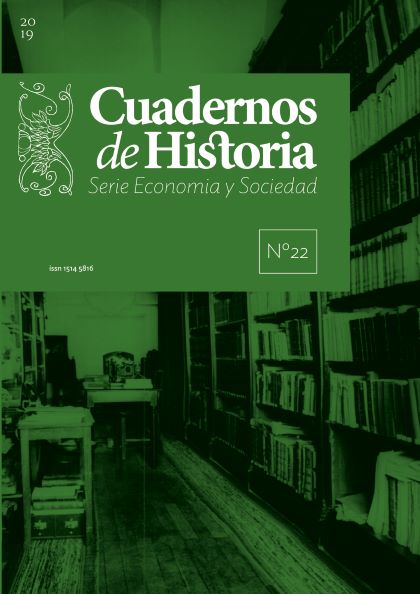The development of the Fuerzas Armadas Peronistas and Peronismo de Base: an approach to their trade union programme
DOI:
https://doi.org/10.53872/2422.7544.n22.25059Keywords:
Fuerzas Armadas Peronistas, Peronismo de Base, Union ProgrammeAbstract
This paper deals with the development of FAP-PB during the period 1960-1975. Both organizations came together in the same project: the FAP-CN were oriented to the military level and the PB to the workers' organization. The Alternativa Independiente and new political definitions were then developed: classism, anti-bureaucracy and criticism of "orthodox" Peronism. The PB's union program focused on the construction of Poder Obrero, making the formation of Grupos Peronistas de Base essential to promote the political struggle within the union framework. The adoption of this union program differentiated the PB from the other Peronist organizations.
References
Luvecce, C. 1993, Las fuerzas armadas peronistas y el peronismo de base, CEAL, Buenos Aires.
Pérez, E. & Duhalde, E. 2003, De Taco Ralo a la alternativa independiente. Historia documental de las Fuerzas Armadas Peronistas y del Peronismo de Base, Tomo I, CARYBE-EDITARE, Buenos Aires.
Pérez Pertino, P. 2009, La Alternativa Independiente de los trabajadores al sur del Río Colorado. Un estudio de caso: el Peronismo de Base de General Roca en la década del 70, Tesis de Licenciatura, Universidad Nacional del Comahue.
Raimundo, M. 2004, “Izquierda peronista, clase obrera y violencia armada: Una experiencia alternativa” en Sociohistórica, 16, 15, pp. 99-128.
Downloads
Published
Issue
Section
License
Copyright (c) 2019 Cuadernos de historia. Serie Economía y Sociedad

This work is licensed under a Creative Commons Attribution 4.0 International License.
Authors publishing in this journal accept the following terms:
a. The author maintains their copyrights and grants this journal the publication of the first original version of their work that is subject to the Creative Commons Attribution License 4.0. This license agreement allows:
Sharing — copy and redistribution of the published material by any means and formats
Reusing — remix, change, and creation of new material from the published work for any purpose, including commercial use.
b. Authors may enter other non-exclusive license agreements of distribution of the version of the published work (i.e. uploading the material on an institutional virtual archive or republishing it on a monographic volume) as long as they attribute the publication of the original version to this journal.
c. It is allowed and recommended that authors publicize their work on the Internet (i.e. on institutional virtual archives or on their personal or professional websites) after their work has been published in this journal.




